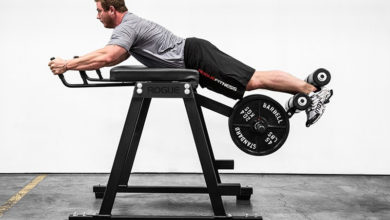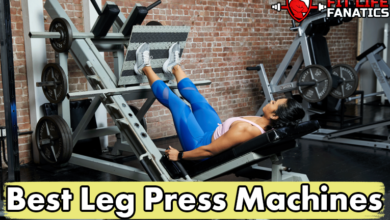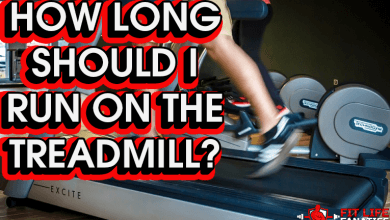Is It a Good Idea To Be Running After Leg Day?
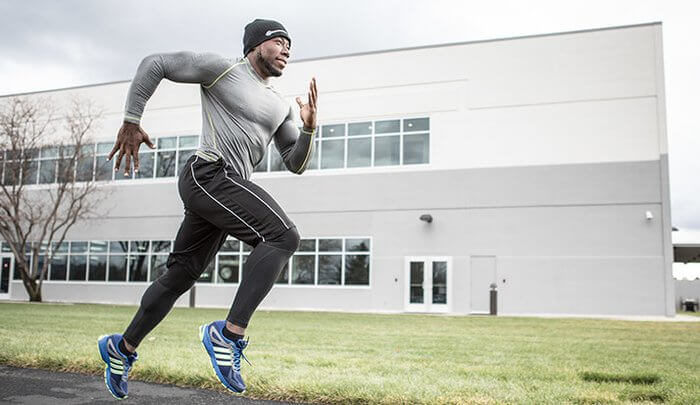
Irrespective of the type of workout split you follow (Bro split or PPL), you’d agree without batting an eyelid that it’s leg day that makes you weep.
All them squats, lunges and Romanian deadlifts can leave you tottering out of the gym.
The question is, can you follow it up with a run the next day?
As counterintuitive as this sounds, runners are increasingly looking to add weight training to their workout routines and it’s not uncommon to see a sprinter making a few laps at the track, right after crushing 400 lbs. on the squat rack.
But, not everybody has the conditioning, mobility and muscle strength of an elite athlete.
What about a rookie fitness buff from the gym? Should you be running after a grueling leg workout or would it be akin to hara-kiri?
Let’s find out.
The Benefits of Running After a Leg Workout

There’s a reason why experienced athletes prefer to run after a heavy leg day. It’s called active recovery and it’s not just bro-science.
Boosts Recovery
Running immediately after a leg routine increases blood circulation in your legs, which in turn helps in supplying your battered leg muscles with more oxygen and nutrients.
If you are looking to intensify your lower body workout routine, maybe you want a bigger butt, jiggly butt, etc, then running after leg day is for you.
In simple terms, faster recovery is on the cards. Along with more nutrients, the increased blood supply will also flush out some of the toxins that build up in the muscles as a result of heavy weight training.
So if you typically experience severe soreness in your legs for days after the training, running can make the soreness disappear a lot sooner.
Boost Metabolic Rate
When you hit legs, you are targeting a whole bunch of muscles. There are four in the quads, three in the hams, two in the glutes and two in the calves on each leg. To fuel such a demanding workout, your body will tap into its muscle glycogen reserves and chances are that it will be depleted by the time you finish the workout. Following this with a run, which also relies on muscle glycogen, will make the body look for alternative sources of energy, which in this case, is fat.
To sum it up, running after weight training can amplify the rate at which your body burns fat. That’s the reason most experts recommend doing cardio at the end of your workout routine.
Keeps Your Body Anabolic
Just 150-minutes of moderate aerobic activity (running, jogging, brisk walking), or just 70-minutes of intense aerobic activity (any sport or HIIT cardio) a week, is all that you need for your overall well-being. Not only is this great for your heart, it also makes you healthier overall.
And being that it targets your lower body it will help you get rid of the mom butt if you have it and maybe even get a nice bubble butt.
The Cons of Running After a Leg Workout
However, it’s not always black and white. There are some caveats that come with the whole ‘run after you train your guns’ bit.
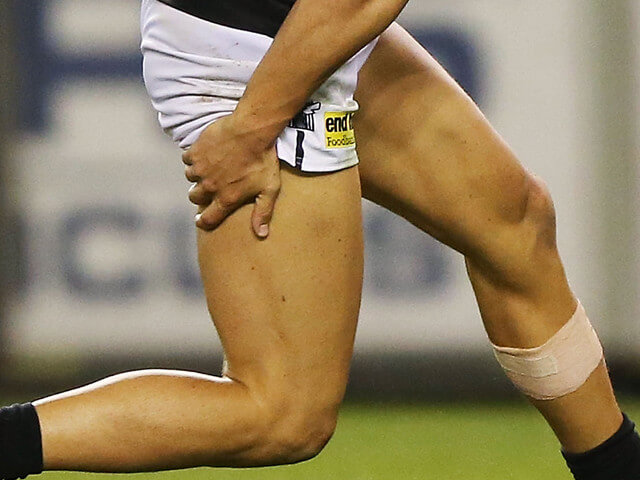
The Risk of Under Recovery
The idea of running after a leg workout is to speed up recovery by boosting blood circulation. However, if you aren’t careful with the intensity and duration of the run, you can hamper recovery. For almost 48-hours post your leg workout, your body will be in recovery mode trying to shuttle nutrients to the sore leg muscles.
In such a scenario, if you exercise the leg muscles even more, you will only increase the recovery demands of your body. More nutrients, more rest. Without adequate recovery, the risk of injury looms large. Many athletes over exert themselves without adequate rest in between and end up severely injured, which segues into our next point.
Risk of Injury
If you have stretched the limits of your leg workout with new 1 rep max lifts, or daily squats, then chances are that your leg muscles will be very tight for a couple of days after the workout.
A high intensity run at this stage greatly increases the risk of muscle tears, sprains or pulls.
If you don’t like running outside and also risking an injury after leg day, you can run on a cushioned treadmill inside, these are designed specifically to prevent injuries, there are also exercise bikes designed specifically for preventing injuries if you don’t want to run on a treadmill.
Limits Muscle Growth
While more cardio can lead to increased fat loss, too much cardio can be counterproductive if you are looking for massive guns. Have you ever seen runners and athletes? They might be as ripped as it gets but they usually don’t have huge muscles, and these are people who would workout 7 days a week.
That’s because to gain muscle you need to increase your calorie intake while reducing calorie expenditure. A run, no matter how short or slow will always add to your calorie expenditure. This is why people that run marathons will most always have not only skinnier legs but will also have skinnier arms as well.
Should Run Before or After Leg Day?
All said and done, what’s the answer?
Is a run worth it after a leg work out?
That depends on your individual body goals and workout preferences.
If you are looking to maximize calorie burn, speed up recovery and most importantly, if you enjoy running, then there’s no harm in going for a short, controlled run even after your leg workout.
But if you are looking for maximum muscle hypertrophy, we would recommend that you tone it down a tad. Go for a brisk walk instead of a run. That way, you still get the increased circulation minus the risk of injuries.
Should You Skip Leg Day for a Run?
So here’s the thing, the answer to this question will ultimately depend on what your goals are and what you want to achieve in the end with your physique. So to answer this question we will give you two completely different end goals and give you the best advice for each goal.
If your goal in the end is to have:
- very muscular toned legs
- have legs that are thick and packed with size
- Strong Legs, lifting heavy weight for low reps

If these are your goals which I feel will apply to most people then the answer to the question “Should I Go Running & Skip My Leg Workout?”, is ABSOLUTELY NOT
No you should most definitely never be skipping leg day for a cardio workout. When you skip leg day to go on a run or really do any kind of cardio in place of a weight lifting leg day you are not conditioning your body to build muscle and increase power.
When you hit the gym for a leg day and are doing exercises such as squats, deadlifts, lunges, and leg extensions you are telling your muscles to not only get stronger but to get bigger as well to accompany the extra muscle fibers that are needed to lift the heavier weights.
If your goal in the end is have:
- Conditioned Legs Built To Run
- Legs with Improved Stamina & Endurance
- Skinnier Yet Built & Toned Legs
- You are a Runner

Yes, you can skip leg day in order to go on a run or engage in a cardio workout. The reason for this is that the goals for this person are very different and require different training styles than for someone trying to pack size on their legs.
For this person, running is more important because running workouts condition the legs for improved stamina, tones the legs, and burns as much fat off the muscles as possible while still retaining the muscle fibers.
Do keep in mind though that the more often that you run, the smaller your calves might be and the skinnier your legs will become. This is because the legs are constantly getting told to burn fat and condition themselves for long and hard runs.
If You Are Gonna Be Running After Leg Day – Know These Tips
Here are some tips that will help you maximize the effectiveness of your run after leg day while reducing the risk of muscle tears.

Steer Clear of Sprinting or High Intensity Runs
The run after your leg day workout doesn’t necessarily have to be a full-steam sprint. Just go for a slow, controlled run that you enjoy. Practice soft running if you still haven’t switched to it. This is gentler on your joints.
If you like to go for a sprint instead, go for HIIT styled sprints in short stints. A 30-second sprint followed by a 10-second break and so on. This increases the consumption of oxygen post exercise, which is an additional boost to your calorie burn. Consider it as a recovery run though.
Get Yourself Some Compression Shorts
Compression garments are a great way to reduce delayed onset muscle soreness and will allow you to maximize the benefits of a short run by boosting blood circulation and aiding recovery. The increased oxygenation can also be beneficial for faster recovery which keeps your body primed for your next workout. Wear the compression garments for a couple of hours post the run for enhanced recovery.
Wear Cushioned Running Shoes
If you are running in your workout shoes, swap them now for running shoes. Running shoes offer much higher cushioning for your joints, improve your stability and offer better traction with the running surface. There’s a reason why athletes choose running shoes when they hit the road or the track. I typically do my running on the treadmill but even I have a dedicated pair of treadmill running shoes that are designed to keep my feet comfortable and supported. Not to mention, they look freaking cool too.
Stretch Your Legs
Stretch your leg muscles before you go for the run. And don’t skimp on the cool down stretch post the run either. Stretch your glutes, your quads and do not ignore the hamstrings. Tight hamstrings are the most frequent cause of injuries in athletes.
Related: Best Leg Stretcher Machines
Watch Out for Signs of Injury or Overtraining
If anytime during the run, you feel that something’s off, then it most likely is. Take a break and allow your body to heal fully before you hit the gym again. Most injuries are a result of ignoring tiny niggles. Athletes just carry on allowing the injuries to pile on for weeks before something gives.
Running After Your Leg Workouts – The Takeaway
That sums up this article on running post leg day. We hope that you can use it as a reference point while deciding whether to add a short and controlled run to your weight lifting routine. The major thing that you need to think about before going off and getting yourself into a high intensity cardio workout after your lower body weight training routine is just what your goals are.
Do you want size and power, or tone and stamina? You pick
Recommended Readings:
- Best Treadmills for Zwift With Full Integration – Best Bang For Buck Options Tested & Rated By Me Personally
- Best Small Treadmills for Apartments – Most Quiet Picks For Small Space
- Schwinn GTX 3 Review : Is It Worth The Hype?(2021)
- How Many Sit Ups Should I Do a Day
- My In-Depth Rogue Echo Bike Review – After 2 Years of Ownership
Sources:
- https://www.bodybuilding.com/content/recuperation-and-muscular-growth.html
- https://www.runnersworld.com/news/a27373504/run-before-or-after-weights/
Ben Mayz
Hi there! I'm Ben, main author and chief editor at Fitlifefanatics.com. I have been obsessed with Strength Training and Fitness for 18 years now.
My passion for living a happy fit lifestyle is what made me realize that fitness is what I wanted for my future.
I went on to earn my Masters in Sports Training & Biomechanics.
My passion for Strength training & fitness and my love of helping others is what made me start Fitlifefanatics.
Here, myself, and a team of specialist aim to provide the most accurate, and actionable information possible in hopes to help foster the fitness community forward.
You can learn more about Fitlifefanatics on our About Page



